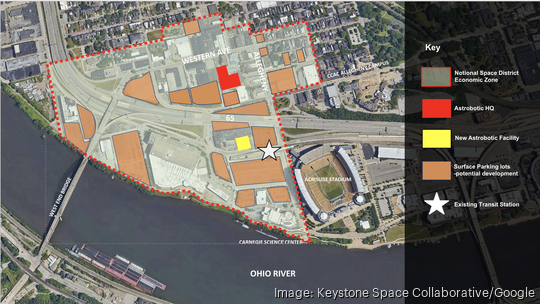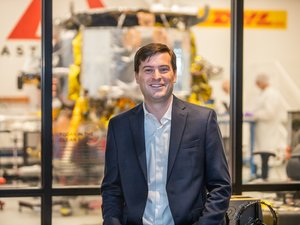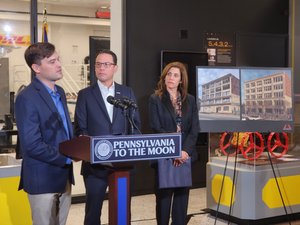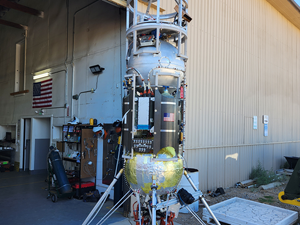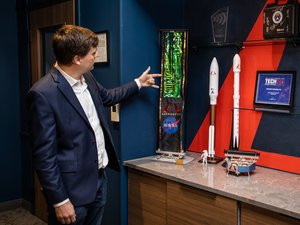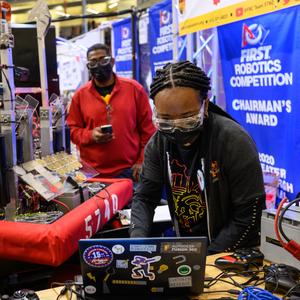
Pittsburgh, we have liftoff.
At 2:18 a.m. Monday, United Launch Alliance successfully sent its Vulcan Centaur rocket on its maiden voyage to outer space from the Space Launch Complex-41 at Cape Canaveral Space Force Station in Cape Canaveral, Florida.
North Side-based Astrobotic Technology Inc.'s Peregrine Lunar Lander, which was fixed inside and near the top of the 202-foot tall rocket, used the vessel to reach about 225,000 miles above Earth's surface before separating from the spacecraft about 50 minutes after takeoff. It now continues on a path bound for the surface of the moon.
Peregrine, named after the fastest bird on the planet, is set to reach lunar orbit in about two weeks. However, the Pittsburgh-based mission control team will wait until Feb. 23 before starting their sole attempt at landing on the surface of a celestial body that hasn't seen America's presence in over half a century following the end of NASA's Apollo program in the early 1970s.
"It's a dream. This is the moment we've been waiting for for 16 years," John Thornton, CEO of Astrobotic, said from mission control about 25 minutes after launch. "We are on our way to the moon."
If successful, the mission and its 20 payloads — five of which came from NASA as part of the agency's $108 million Commercial Lunar Payload Services contract with Astrobotic — will accomplish many firsts. Some are related to the payloads themselves, like those representing the first existence on the moon for six countries, while others fall on the design of the robotic lander, which was built in Pittsburgh by a crew of about 200 people over the past few years.
"The number of firsts are massive, and I think that's what makes it exciting," Thornton said during a press conference on Jan. 5. "There's a lot of people looking to this mission, and [there's been] a lot of meaning and connection we've made with people all over the world. I think that's going to keep eyes attached to this and hopefully, on a great success, we'll see a lot of people cheering this mission and all of our customers that have joined this mission."
Astrobotic's own journey to this moment is one that's been many years in the making.
Initially established as a spinout from Carnegie Mellon University in 2007 to compete for Google’s Lunar X Prize, the company went on to face significant challenges in the highly competitive aerospace industry, likely hindered by its status as a small startup competing against billionaire-backed organizations.
For years, Astrobotic struggled to secure private-sector partners and outside investment, and Thornton is known to frequently tell the tale of an instance during a funding pitch where audible laughter from the audience underscored the skepticism at the time that surrounded the company's prospects.
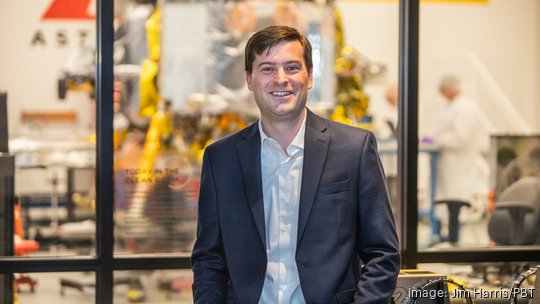
But Thornton, taking the reins of the young company in 2012, retooled its mission and over the years landed the company several key contracts with NASA that, combined, are valued at hundreds of millions of dollars.
Near the end of the last decade, the company then convinced Congress and NASA to create a program called Commercial Lunar Payload Services (CLPS) with the idea of sending commercial payloads to the surface of the moon. Astrobotic then won the first CLPS bid.
Since then, Astrobotic has managed to convince enough people in the private sector that serving as one of NASA’s dedicated cargo operators is a business model that will grow in the years to come.
Obtaining about $500 million in NASA contracts since its origins has helped defend that claim, of course, but so too has the growing belief that the final frontier is once again starting to be pursued at interest levels that were last seen at the genesis of the Space Race of the mid-20th century. CLPS, after all, is part of NASA’s broader Artemis program, a robotic and human moon exploration initiative that’s aiming to put humans back on the lunar surface by the end of the decade.
“In this golden era of exploration, NASA is working with partners like Astrobotic to do what’s never been done before — successfully landing American commercial payloads on the lunar surface. NASA’s CLPS missions will deepen our understanding of the moon and help develop the tools and technologies to take humanity’s next giant leap: Sending the first humans to Mars,” NASA Administrator Bill Nelson said in an email statement to Pittsburgh Inno last April.
And regardless of Peregrine's fate — only about 40% of lunar missions have succeeded over the decades — Astrobotic is still destined for triumph in the years ahead.
The company is actively working on Griffin, a lander four times the size of Peregrine that will deliver NASA’s water-detecting rover VIPER to the moon within the next two years following a $199 million contract from NASA. Astrobotic also has plans to provide sustained power to the moon with permanent electricity, and it could do so by 2028 if all goes according to schedule.
All of this comes amid the ongoing formation of a dedicated Space and Defense Innovation District in the North Side that's anchored by Astrobotic, the nonprofit Keystone Space Collaborative and the U.S. Air Force's AFWERX Hub in Pittsburgh. The themed industry cluster will look to catalyze companies and organizations that are pursuing opportunities beyond the limits of the Earth's surface.
"I think this is a great opportunity for so many reasons," Pittsburgh Mayor Ed Gainey said to a crowd of about 300 people during the announcement of this district last June. "This is fantastic with regards to really being on a new frontier of a new industry that's going to be a $1 trillion [industry by 2040], that's going to be throughout the tri-state region built right here on the North Side. I just think that's phenomenal."
